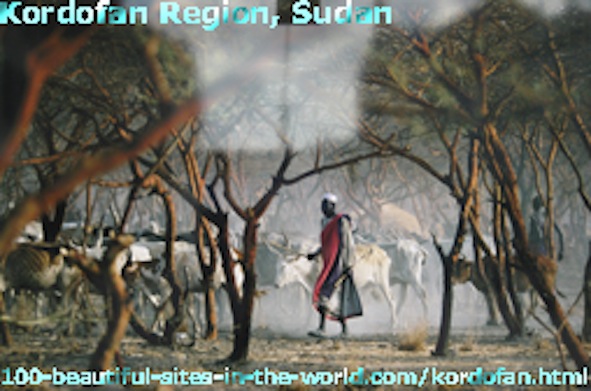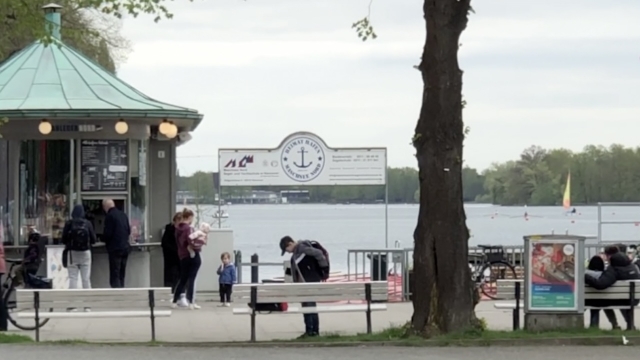Precious Glue Grows in Kordofan!
Kordofan occupies almost the heart of Sudan. It is one of the beautiful sites in central Sudan. Before the recent military, religious regime came to power, Kordofan was a province in the near west of Sudan (it is central in most sources) that touches the White Nile and spreads west to border Darfur province, with the Nuba Mountains in the southeast.
Now in recent days, this regime divided all the provinces of the country and Kurdufan was affected by division, when the regime divided it in 1994 into three new federal states such as North Kurdufan, South Kurdufan and West Kurdufan.
This page covers Kordofan and the production of the Arabic gum, the precious glue of the province. If you knew more about this area in Sudan, please use the form on this page to write about it. Thanks.
This is also an invitation for Kordofanian to write about their province. However, if you wanted to write about political topics, link to my dad's website at the two links above.
Kurdufan province was once again affected by dividing West Kordofan between North Kurdufan and South Kurdufan in the year 2005, when the implementation of the Comprehensive Peace Agreement between the Sudanese dictatorial regimes and the Sudanese People's Liberation Movement (SPLM) entered into execution.
This is once one of the beautiful areas in Sudan before the recent political crisis. The beauty of the entire area influenced many poets to write about it and that in turn has influenced many of the Sudanese poets and singers to write the best of the Sudanese songs for it.
They performed well for Kordofan and enriched the Sudanese music by the rhythm of their province, combined with their traditions, customs and the richness of the nature.
3.6 million people live in 376,145 square kilometres, divided between some tribes such as Rekabeiah, Bedairiah, Joamaah, Hamar, Dar Hamid, Kawahla, Baggara and Kababish in the north.
The area is just desert in the dry season and it becomes fertile in the autumn from June to September. Although the province produces some crops like cotton, groundnut and millet, but it is known for its mass production of the Arabic gum.
It is well known that Sudan is the biggest African country. It is the world's largest single producer of the renowned natural Arabic gum too.
A thick belt of hashab trees (Acacia Senegal), from which the gum is extracted, stretches from one end of the country to the other and supports both small-scale farmers and the Sudanese economy as a whole.
The Arabic gum was an essential ingredient in the mummification process in ancient Egypt. They used it to preserve paintings before biblical times.
The Kordofan Gum, but Not the Arabic Gum!
Today Kordofan gum is still a treasured commodity that regarded as something of a panacea. Many sources call it the Arabic gum, although it is not. It is Kurdofan gum.
It is a natural emulsifier with the same properties as glue, and it is yet edible by humans and highly soluble in water. In soft drinks, it prevents the colour from separating and the sugar from precipitating.
It holds the ingredients in medicines together in the same way. In newspapers, multiple layers of gum serve as a protective film that keeps the print consistent and permanent.
Sudan's small-scale farmers benefit from major global demands. They tap the amber-coloured gum by cutting holes into the bark. They send the raw sap to Europe to be processed and sold.
However, in the last decades, exports of Arabic gum have fallen dramatically, particularly because of the humanitarian deterioration caused by Darfur crisis, which has damaged the reputation of Sudan and had a negative impact on all exports.
Global climate change is also contributing to the decline in Sudan's exports of Arabic gum. Over the past 50 years, Sudan has experienced lower than average rainfall, drought and rising temperature.
The Dangers Facing Kurdofan Hashab Forest!
This has made serious negative impact on the hashab-forests, affecting Kordofan gum / Arabic gum production and the lives of millions of Sudanese people.
Besides being important revenue, wedge of hashab-forests improves the fertility of the soil and reduces wind erosion at the same time.
In the future, the temperature will rise even more, and rainfall trends are unclear. Therefore, the prospects for the Arabic gum forests are uncertain.
Any further loss of forest and income would threaten livelihoods and exacerbate the already existing conflicts in the region.
Have you been attracted by the precious glow of Kordofan? Did you know more information about the area? Please, use the following form and contribute to this page. You can upload pictures from Kordofan too. Thanks.
In addition link to more than 100 beautiful sites in Africa from the links in this main column, or the links at the right column. Like, tweet, follow, or pin the pictures. Thanks.
Have A Great Story About Some Beautiful Sites in the World?
Do you have a great story about any beautiful site in the world? Share it!
You can do more things here if you have enjoyed reading this page about Kordofan in Sudan, or any of the 100 beautiful sights in Africa.
- Please share it with your social media services through the small buttons at the left column, the right column and bottom of the page. This could be also additional value to you, as you could experience some social networking technologies and know more.
- Subscribe to feeds from 100 beautiful places in Africa using the orange button, or through the buttons of Google, Yahoo, Bing and the others at the top of the left column.
- When you see comments on the second section of the page here, click on them to comment, or respond to comments.
- Create the User Interface by requesting a membership at Members here to write about yourself and your cities, get in touch with your friends, upload pictures from beautiful places in your city of birth, or city of residence and share commentaries on them.
- The best useful way to get your friends to your user interface is to forward 100 Beautiful Cities to them when you click on this link. Let them begin with this page, register and interact with you.
Comments on Kordofan appear at the second section of the pages above this paragraph and below the comments form.
100 Beautiful Sites in the World| 100 Beautiful Sites Blog| 100 Beautiful Sights| About Us| Beautiful Site Map| Beautiful Scene Newsletter| Contact Beautiful Sites| Any Beautiful City| Forward 100 Beautiful Cities| User Interface| Beautiful Photo Exchange| Beautiful Picture Contest| Beautiful Sites Link Exchange| Travel Photography| Aegean Sea| Altai Mountains| Amazonian Beautiful Images| Amazon Rainforest| Amazon Rainforests| Amman| Andalusia| Archipelago Sea| Arctic Ocean| Battery| Bayan Olgii| Bay of Plenty| Beautiful Tonga Islands| Beijing| Bering Sea| Big Sur| Boreal Forest| Borneo| Cape Floral Region| Caracas| Caribbean Sea Turtles| Chacaltaya| Chicago| Congo River Basin| Copenhagen| Copenhagen Climate Change| County Meath| Dalarna| Franz Josef Glacier| Ganges Delta| Gondar| Great Barrier Reef| Gujarat| Herschel Island| Hudson Bay| Ilulissat| Indus River| Kakadu| Kalahari Desert| Kauai| Kilimanjaro| Komodo Island| Kordofan| Lake Baikal| Lake Chad| Lilongwe| Madagascar| Mergui Archipelago| Mississippi River| Monteverde Cloud Forest| Naukluft Park| Niger Delta| North Slope| Norwegian Tundra| Nunavut| Nuwara Eliya| Okavango Delta| Olympia| Panama Canal| Paris| Perth| Quelccaya Ice Cap| Recife| Rio de la Plata| Ross Ice Shelf| Rotterdam| Rub al-Khali| Sagarmatha National Park| Saint Louis| Serengeti| Siberia| Solomon Islands| Sulu Sulawesi Sea| Thames| Tian Shan| Timbuktu| Tokyo| Trinidad| Tuvalu| Upper Po Valley| Valdes Peninsula| Vavau| Venice| Wadden Sea| Yamal Peninsula| Yangtze River| Zackenberg| Zahara de la Sierra| Massai-Mara Natural Reserve| The Massai| White Massai| The Story of My Life Ended in Gondar|

